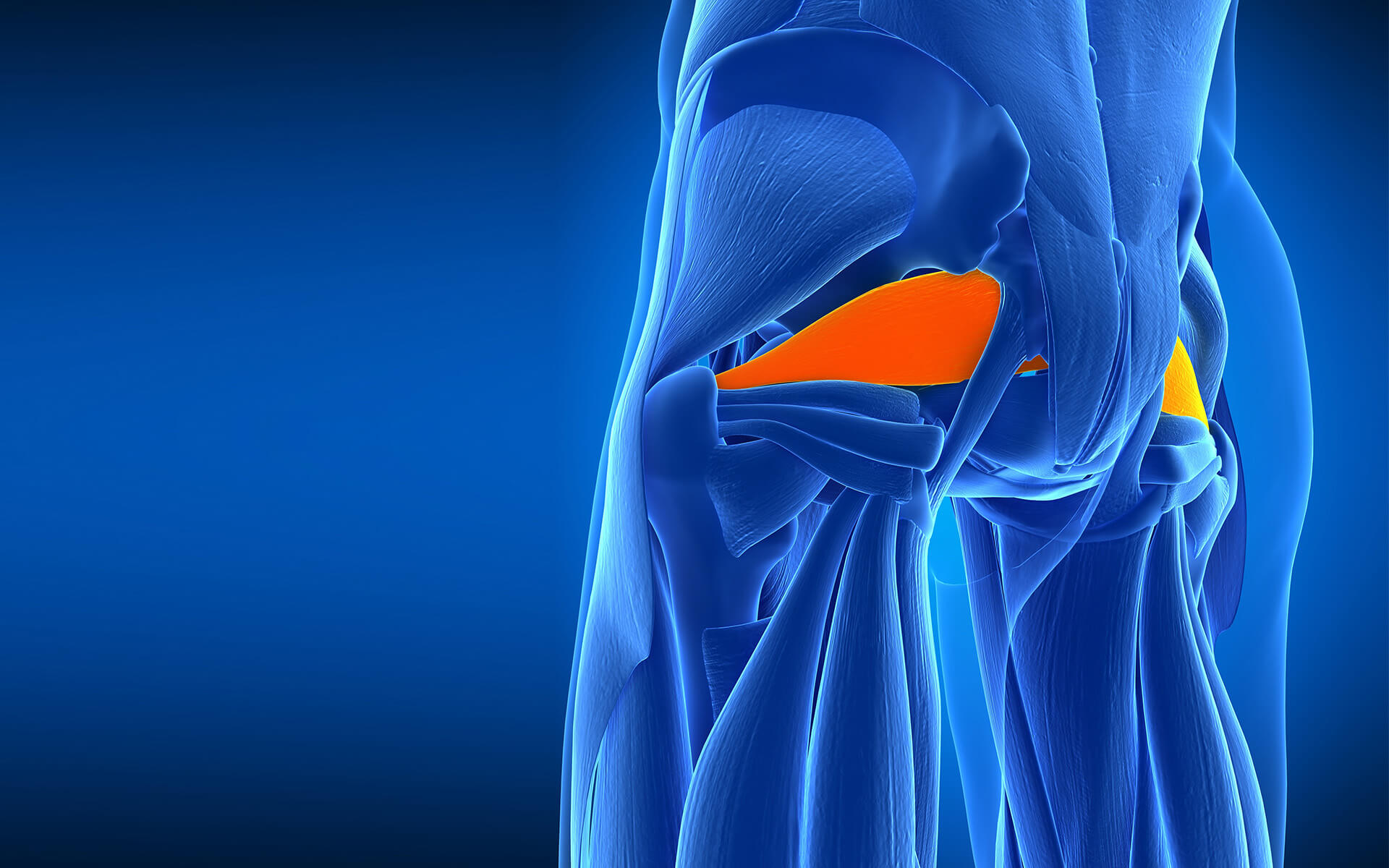The piriformis muscle is a pear-shaped gluteal muscle that plays a critical role in walking. This muscle enables your hips to rotate and your legs and feet to rotate. The sciatic nerve sits just below the piriformis muscle. Piriformis syndrome is a condition in which your piriformis muscle spasms, resulting in pain in the buttocks area. This spasming may also aggravate the nearby sciatic nerve, resulting in a sharp pain that radiates down one leg.

Understanding Piriformis Syndrome

What is Piriformis Syndrome?
Symptoms
If the piriformis muscle becomes tight or inflamed, it can cause pain and discomfort in the buttocks and lower back, as well as numbness or tingling in the legs. Other symptoms include:
- Pain when incline walking
- Pain after prolonged sitting
- Reduced range of hip joint motion
- Pain, numbness, or tingling in the butt, thigh, calf, or foot
Causes
There are several possible causes of piriformis syndrome, including:
- Overuse or strain of the piriformis muscle: Activities that involve repetitive motions or prolonged sitting, such as running or cycling, can cause strain on the piriformis muscle and lead to piriformis syndrome.
- Trauma or injury to the muscle: An injury to the buttocks or lower back, such as a fall or car accident, can cause damage to the piriformis muscle and lead to piriformis syndrome.
- Spinal abnormalities: Certain spinal abnormalities, such as a herniated disc or spinal stenosis, can put pressure on the piriformis muscle and cause it to become inflamed.
- Poor posture: Maintaining poor posture for extended periods of time can cause strain on the piriformis muscle and lead to piriformis syndrome.
Risk Factors
There are several factors that may increase the risk of developing piriformis syndrome, including:
- Physical activity: People who participate in activities that involve repetitive motions or prolonged sitting, such as running or cycling, may be at increased risk for piriformis syndrome.
- Age: Piriformis syndrome is more common in middle-aged and older adults.
- Gender: Women are more likely to develop piriformis syndrome than men.
- Spinal abnormalities: Certain spinal abnormalities, such as a herniated disc or spinal stenosis, may increase the risk of piriformis syndrome.
- Poor posture: Maintaining poor posture for extended periods of time may increase the risk of piriformis syndrome.
Diagnosing Piriformis Syndrome
To diagnose piriformis syndrome, your doctor will review your medical history. In some cases, a contracted piriformis muscle can be detected during a physical exam. Diagnosing piriformis syndrome includes ruling out other possible sciatic conditions. Diagnostic tests such as MRIs, X-rays or nerve conduction tests may also be utilized to detect injuries affecting the piriformis muscle.
Piriformis Syndrome Treatment
Piriformis syndrome treatments can range from non-invasive treatments to surgical relief. Depending on the severity of your piriformis muscle injury, your doctor may recommend a multimodal approach consisting of one or more approaches. Your doctor may first recommend more conservative treatment options, including:
- Avoid activities that may trigger pain
- Alternate heat and ice in the affected area
- Talk with your doctor or physical therapist about a good exercise program that includes stretching
- Anti-inflammatory medication or muscle relaxers to help ease muscle tension
Corticosteroid injections to help reduce inflammation or swelling around the nerves - Botox injections
- Physical therapy
Surgery is typically only recommended for cases of piriformis syndrome that have not responded to other treatment methods. The goal of surgery is to release the piriformis muscle or remove any tissues or structures that may be pressing on it. There are several types of surgery that may be used to treat piriformis syndrome, including: - Piriformis muscle release: This procedure involves making a small incision in the buttocks and releasing the piriformis muscle to relieve pressure on the sciatic nerve.
- Sciatic nerve decompression: This procedure involves removing any tissues or structures that may be pressing on the sciatic nerve to relieve pressure and alleviate pain.
- Spinal surgery: In some cases, spinal surgery may be necessary to treat underlying conditions, such as a herniated disc or spinal stenosis, that are causing piriformis syndrome.
After surgery for piriformis syndrome, most patients can return to walking the next day. Your doctor may prescribe pain medications for the first week or two after surgery. Around 2 to 3 weeks after your procedure, your doctors will remove any drains that may have been inserted during the procedure and will clear you for physical therapy. It can take anywhere from a few weeks to a few months for your muscles to fully reactivate, the pain to completely recede, and for recovery to be complete. Most patients will notice relief from the original pain early on and can return to normal activity within 4 weeks.
Our Doctors
Nerve decompression surgeons who are piriformis syndrome specialists are rare. At the Institute for Advanced Reconstruction, our team of surgeons are specialists in nerve-related conditions and utilize cutting-edge microsurgical techniques to provide lasting relief to our patients.
Patient Stories
Find a Piriformis Syndrome Specialist Near Me
Insurance Information
The Institute for Advanced Reconstruction participates in a wide range of insurance plans, including those listed below. However, each physician has their own accepted insurance and hospital affiliations. Before scheduling an appointment, please contact your insurance carrier to confirm that your provider is in-network.
If we are not an in-network provider, our friendly insurance specialists will help you find the most coverage available for your treatment.
- Horizon Blue Cross Blue Shield of New Jersey
- Medicare
- Railroad Medicare
- Aetna
- Cigna
- United Healthcare
- Oxford (Freedom, Liberty)
- MagnaCare
Related Articles
Relief for Piriformis Syndrome
Patient Resources
Learn more about what to expect when it comes to surgical procedures and treatments at the Institute for Advanced Reconstruction by visiting our patient resource page.
Am I a candidate for Piriformis Syndrome Treatment?
Your doctor will help you determine if you are a good candidate for piriformis syndrome treatments, including nerve decompression surgery. Schedule a consultation today to find out if you qualify.





.jpg)



